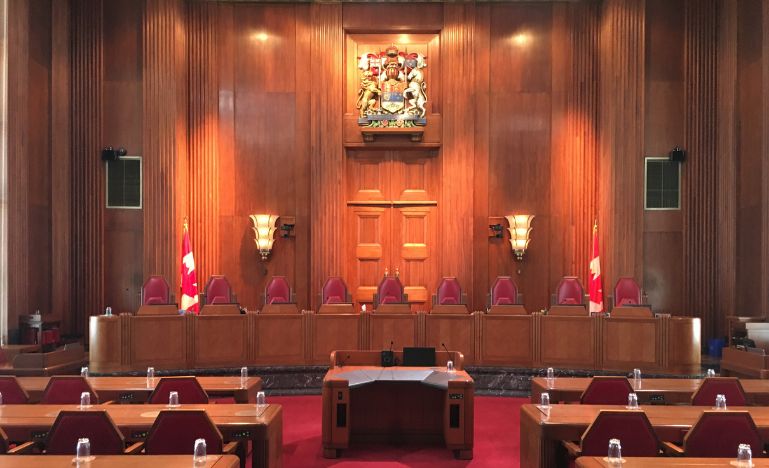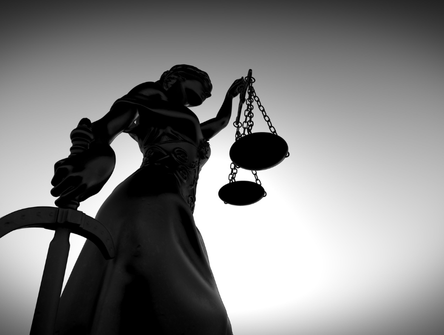An honourable move or a slippery slope?
Supreme Court Justice Mahmud Jamal’s decision to recuse himself from a hearing on Quebec’s secularism law has raised questions

There are two ways to look at Supreme Court Justice Mahmud Jamal’s decision to recuse himself from the court’s hearing of a legal challenge of Quebec’s Bill 21.
As political science professor Emmett Macfarlane pointed out in a recent post, one is reassuring, the other is alarming.
On the one hand, it serves as a comforting point of comparison to the politicized state of the judiciary in the United States, where even clear evidence of a conflict of interest isn’t always enough to get a judge kicked off a case.
On the other hand, there’s that whole slippery slope thing.
“The justice did something honourable. But the idea that a judge could be hounded off a case like this is extremely worrisome,” says Eric Maldoff, a Montreal-based corporate lawyer and co-founder of the pro-anglophone lobby group Alliance Quebec.
The government of Quebec and two advocacy groups — Mouvement Laïque québécois' and Pour les droits des femmes du Québec — argued Jamal was biased against Bill 21, the province’s secularism law, which prevents many public servants, including public school teachers, police officers and judges, from wearing religious symbols on the job.
They claimed that because Jamal served on the board of the Canadian Civil Liberties Association (CCLA) prior to his appointment to the bench, he couldn’t be impartial when the top court hears a challenge to Bill 21 and requested he recuse himself.
The CCLA and the National Council of Canadian Muslims filed a challenge in the Quebec Superior Court in 2019 to stay the law’s application and declare it invalid.
According to a letter written by the Supreme Court's registrar, Jamal saw no legal basis for seeking his removal from the case. He only stepped aside to avoid causing a distraction for his colleagues on the bench.
“It’s possible the decision could have been seen as tainted if he’d stayed in, but I don’t think that’s a conclusion reasonable people would make,” says Jonathan Griffith, who serves on the Canadian Bar Association’s Ethics and Professional Responsibility Committee.
“But it would have been a distraction if someone had filed a complaint with the Canadian Judicial Council or if they’d decided to refer the matter back to the Supreme Court. The court might have decided they needed to settle this matter first, before going on with the case. That could have meant a long delay.”
Maldoff says it also could have put Justice Jamal’s colleagues in an awkward bind.
“A judge can decide that, legally, they don’t need to recuse. And they may be right,” he says.
“But then they have to ask themselves, ‘Do I really want to be a source of controversy for the entire court?’ Because you know there will be an appeal, and when it comes, your fellow justices will have to issue a ruling on your decision to stay in. That’s a disruptive experience for any court, to say the least.”
Technically, the bar for establishing what the jurisprudence calls a “reasonable apprehension of bias” is set very high for judges.
“What would an informed person, viewing the matter realistically and practically — and having thought the matter through — conclude?” says Eugene Meehan, a partner at Supreme Advocacy and a former executive legal officer to the late Chief Justice Antonio Lamer.
“That’s the test.”
Beginning in 1999, the Wewaykum Indian Band and the Wewaikai Indian Band in B.C. asked the Supreme Court to nullify its unanimous decision to reject bids by the bands to take over one another's reserves and deny them government compensation for a clerical error.
After their appeal was dismissed, the bands argued Justice Ian Binnie was in a conflict when he wrote the decision because he had advised the Department of Justice on the case many years earlier, before joining the bench. The SCC ruled the decision would stand and that Justice Binnie did not have to step back from the case because, in the court’s words, “no reasonable apprehension of bias is established.”
“The takeaway from the Wewaykum decision is that there is a very high bar to disqualify a judge,” says Meehan. “There’s a strong presumption of judicial impartiality, and it’s not easily displaced.”
The argument for pushing Justice Jamal off the Bill 21 case was always flimsy, says Macfarlane, who teaches Canadian politics and constitutional law at the University of Waterloo.
“Unless he was directly involved in that litigation effort, the role of board member doesn’t prove a conflict at all,” he says.
“Board members tend to be involved with the broad direction of their organization — it’s a passive role. This was far more about perception than any real conflict.”
Still, the effort to push Justice Jamal off the Bill 21 case did succeed in practice. Meehan says that might affect how the court’s eventual ruling is perceived.
“If there are seven judges sitting … in principle a 4-3 decision is still an authoritative decision of the court, still legitimate,” he says
“But human nature being what it is, if the decision is a close one, lawyers and clients will ask themselves how it might have gone had Justice Jamal stayed in. It won’t sow doubt about the legitimacy of the decision, not at all. But people won’t be able to stop themselves from wondering ‘what if.’”
Maldoff says he fears the beginning of a trend.
“What I see here is that if you make enough of a fuss, you can put a judge in a position where they have to make an unpleasant choice,” he says.
“Once we start playing this game, where does it end? Can a Jewish judge still rule on a case involving restrictions on the use of religious symbols, for example? This could be seriously damaging to the judiciary’s ability to do its job.”


